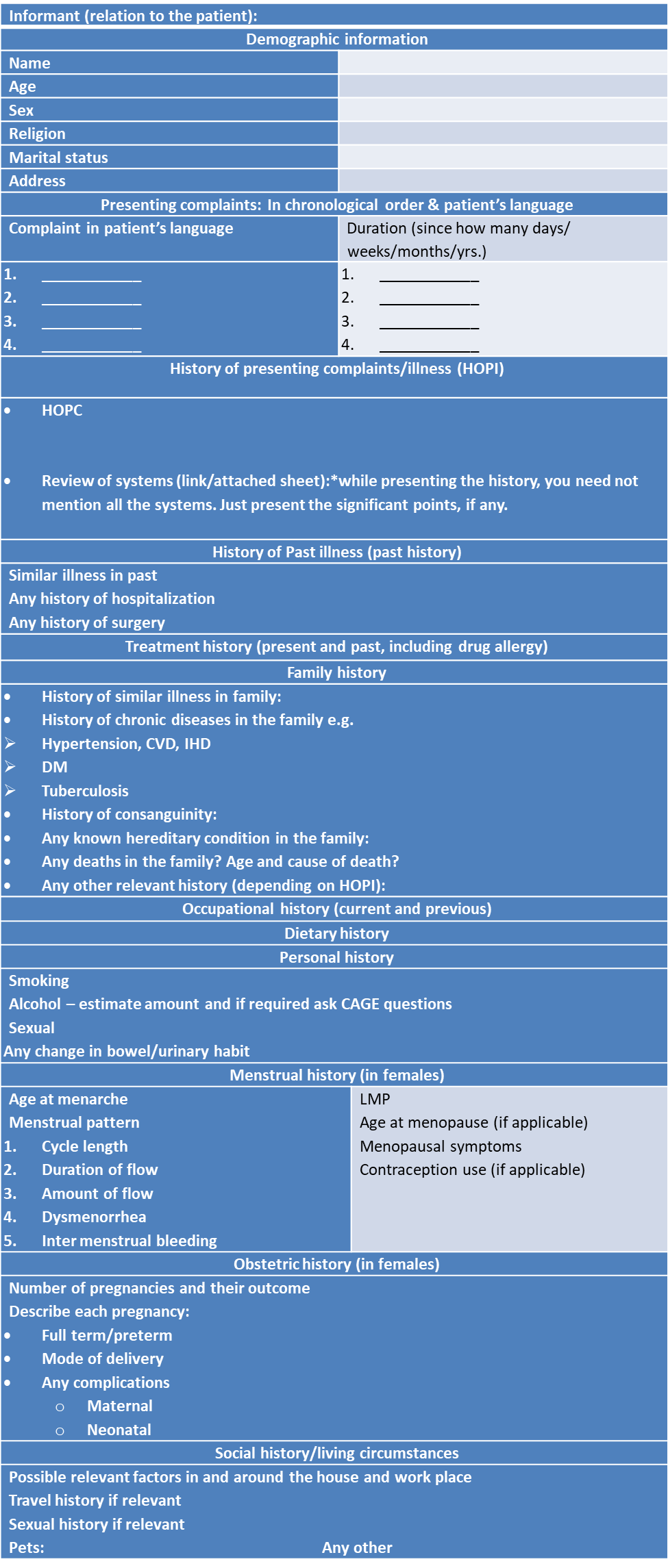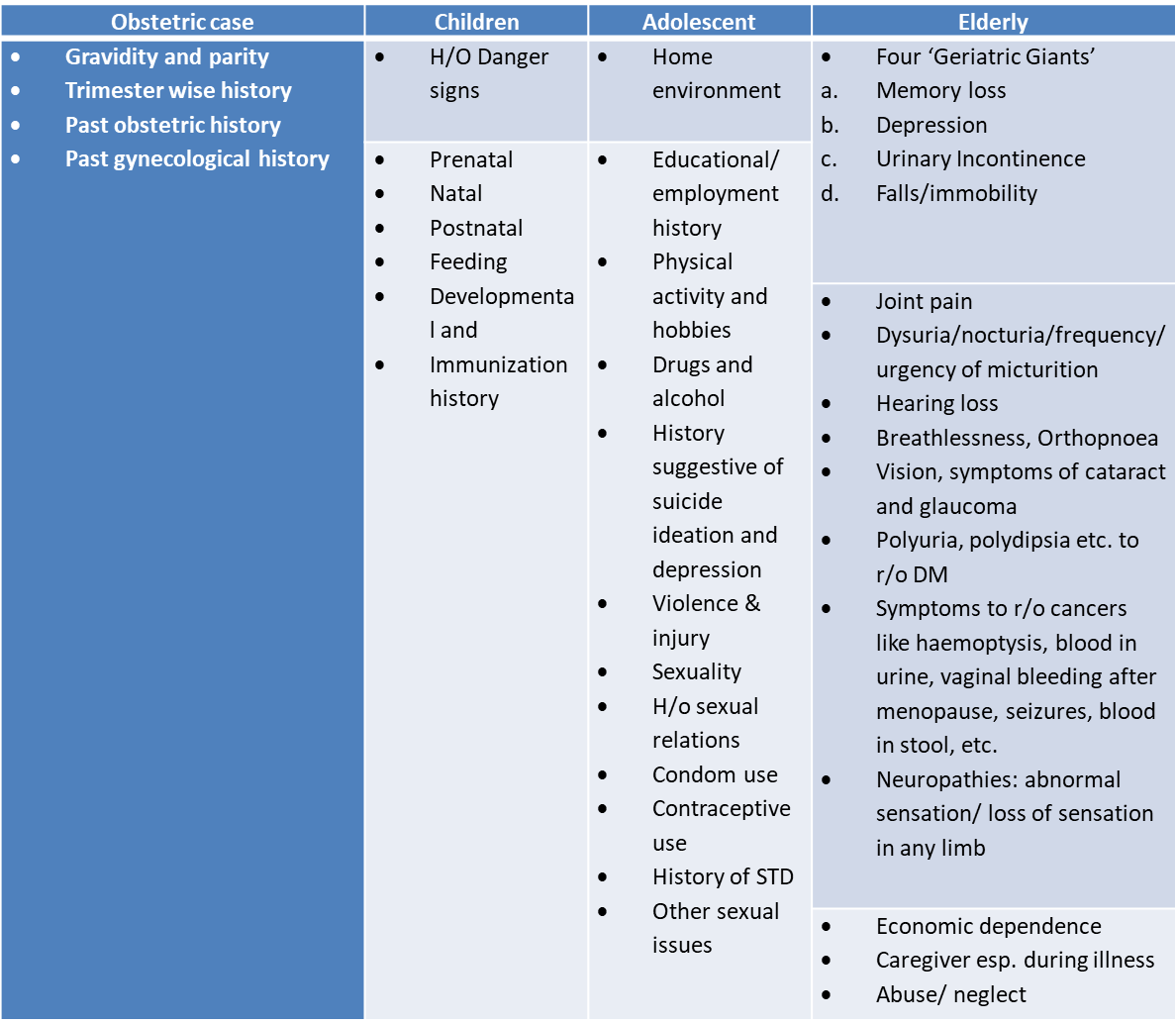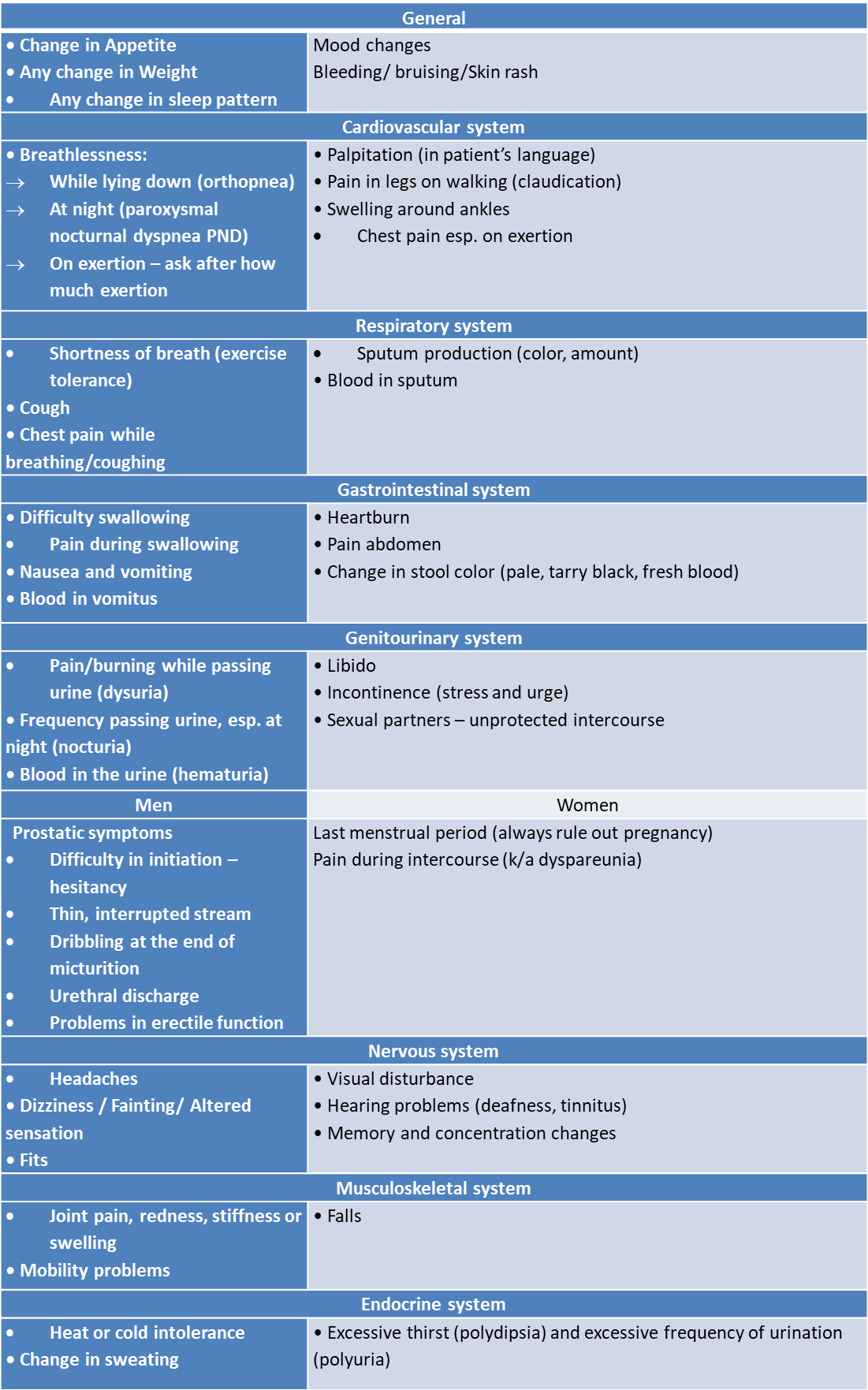This format is a general one. Additional information may be required in special cases like obstetric, infants, elderly etc.
It's an effort so that you don't miss out any section of history taking. All the best!
If you would like to have a printed format, please write to us on the 'Contact' tab. We shall promptly send you the pdf by email.
Additional headings for different types of case may be needed. Some are listed below. However, a detailed history format may be found for individual type of case
As you gain experience, you would spontaneously know which specific symptoms to ask for, to rule out or confirm certain disorders. However, the beginners can check out all the systems listed in the table below.
If there is any positive response to any of these, you have to ask further questions which raise or lessen the probability of certain diagnoses. This new information has to be added to the HOPI or past illness as relevant.
References:
1. R Alagappan. Manual of Practical Medicine. 4th ed. New Delhi. Jaypee Brothers Medical Publishers, 2011
2. Graham Douglas, Fiona Nicol, Colin Robertson. HISTORY TAKING AND GENERAL EXAMINATION. In Macleod’s Clinical Examination. 13th ed. Edinburgh. Churchil Livingstone Elsevier, 2013: 5 – 354
3. Michael Glynn, William M. Drake. Doctor and patient: General principles of history taking .In HUTCHISON’S CLINICAL METHODS. 24th Ed. London. Elsevier, 2018: 20 – 31
4. Bowdler, N, Elson, M, Glob. libr. women's med., (ISSN: 1756-2228) 2008; DOI 10.3843/GLOWM.10003
5. http://www.ihatepsm.com/blog/geriatric-clinico-social-case-community-med...
6. Makhija, S. & Tiwari, P. Indian J Pediatr (2018) 85: 738. https://doi.org/10.1007/s12098-017-2388-z
7. Diane Sacks, Michael Westwood, 2003. An approach to interviewing adolescents. Paediatr Child Health Vol 8 No 9 November 2003: 554-556
5-Page ANC History Taking Format: https://ihatepsm.com/blog/5-page-anc-history-taking-format-essential-gui...
Why ANC History Taking Matters?: https://ihatepsm.com/blog/why-anc-history-taking-matters
Taking a Meaningful Clinical History: https://ihatepsm.com/blog/taking-meaningful-clinical-history
Format for Clinical History Taking: https://ihatepsm.com/blog/format-clinical-history-taking
History taking in a paediatric patient: https://ihatepsm.com/blog/history-taking-paediatric-patient
Format for CSC taking: http://www.ihatepsm.com/blog/format-clinico-social-case-taking-community...
Geriatric Clinico-Social Case: https://ihatepsm.com/blog/geriatric-clinico-social-case-community-medicine
